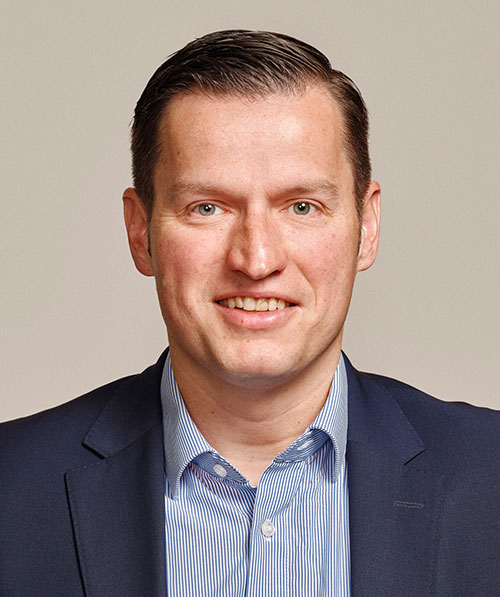Next month will mark five years since Velliv (formerly Nordea Liv and Pension, Denmark) left its parent company—the banking group Nordea—to forge a new identity as a member-owned pension provider. Chief among the challenges was the need to build up an investment management function that had previously been handled in large part by Nordea.
 Christoph Junge
Christoph Junge Head of Alternatives, Velliv
It was the development of this team that brought Christoph Junge, now Head of Alternatives, to the institution. “I was perhaps the eighth or ninth person in the investment team when I joined, just when we were being spun out of Nordea, and now we are close to 50” he recalled in conversation with bfinance Investor Spotlight. “Nordea was a very good relationship but the spin-off opened up a whole new world for us.”
Today, the alternative investment team, headed by Junge, handles approximately 10% of Velliv’s EUR45 billion in assets, providing exposure to private equity, private credit, infrastructure, timberland, CTAs, and commodities. Some of these asset classes were not even featured in the portfolio five years ago. Separately, a further 7-8% is invested in real estate. The alternatives programme delivered a “fabulous year” in 2022, with an overall return of nearly 10% amid struggling equity and bond markets. Yet high-fee asset classes remain under continual vigorous scrutiny in a highly cost-conscious pension system. Junge recently sat down with Investor Spotlight to discuss their approach and latest developments.
Q: What does your alternative investment portfolio look like?
We have almost 10% of the portfolio in alternatives and five people covering this area (not including 7-8% in real estate, which has a separate dedicated team). Private equity and private credit are the largest building blocks. Each sub-asset class has its own risk/return target which is appropriate to that area: for private equity, for example, it’s a listed equity market proxy multiplied by a beta plus a premium; for CTAs and commodities, it’s a target Sharpe Ratio. There is a good dialogue with the portfolio construction team in setting these objectives and defining the role of each alternative asset class in the overall portfolio: each one has its own purpose.
Our private equity portfolio is quite large, with about 70 underlying funds on the book. To do this, we have teamed up with managers: BlackRock for Europe and Asia Pacific, while Churchill is helping us with North America. I don’t believe I’m better at sourcing—for instance—an Asian PE fund than a team that has an office there. We take care of the Danish GP relationships ourselves though—that’s historic and we have continued to build it out, with another Danish GP added last year. Those [multi-manager] relationships in private equity are really customised: we have veto rights on all of the primaries they’re sourcing for us. It’s a highly cost-efficient way of doing it, rather than staffing up a lot internally. I don’t think we will be changing this model in the foreseeable future.
For private credit and real assets (infrastructure, timberland) we have smaller programmes and we invest in single manager funds. There are fewer line items [compared with private equity], we can manage it and fulfil all the regulatory requirements that we have.
In liquid alternatives, we’ve seen some of the biggest changes. Historically there was a portfolio called ‘other alternatives’ consisting of a legacy assortment of hedge funds and special situations funds. Now we invest in CTAs and long-only commodities.
Q: How did you come to add liquid alternatives?
A couple of years ago I did some analysis to consider what would really add value to the portfolio and that analysis highlighted liquid alternatives, particularly CTAs. CTAs are helpful for ‘crisis alpha’: they don’t give the highest returns but can give returns when we need it the most. Commodities are helpful in periods of high inflation and even stagflation: performance during periods of stagflation is particularly important, since most traditional assets (equities and bonds) suffer.
Deciding to introduce these was not necessarily easy. We had some exposure to Alternative Risk Premia strategies but they’d delivered poor results in 2019-20, which meant that quantitative strategies had a relatively poor standing internally. But I do believe that there’s been too much data mining in ARP, whereas CTAs have been around for a very long time and have delivered crisis alpha in every major crisis since the 1980s. We like to keep it simple in our approach to CTAs to avoid data mining and overfitting.
At the time of getting these changes through, I did not foresee the outstanding performance that would come in 2022. CTA once again delivered some good returns at the right time, though of course March this year was challenging: 2-year US government bond yields dropping by over 100bps over the course of three days really hurt trend following managers.
Q: Last year was a very interesting period for alternative investments. How did your portfolio do overall, and have you experienced any pressure to reduce exposure to alternative investments as a result of strong valuations?
Alternative investments had a fabulous year: we earned almost 10% on our alternatives portfolio last year. Timberland and infrastructure really contributed to that, and also Private Equity gave double-digit returns.
There was a lot of discussion in the media about whether to believe the valuations in private market strategies, and certainly when Q3 valuations came in marked even higher we did have conversations with GPs to question these numbers. Multiples had contracted (as we’d thought they must), but there was strong growth in EBITDA which supported those higher valuations. We also saw a fair number of exits last year and those went well, with some of them selling for 70-90% above the previous book value: there aren’t many IPOs happening but strategic buyers are still active. We did become confident in those valuations.
Overall we did end up being over-exposed in some illiquid asset classes. But we haven’t been under pressure to reduce exposure. Helpfully, the portfolio construction team has increased our allocation to alternatives. The growth in Velliv’s overall assets has also been useful (we’re still getting more inflows than outflows). The organisation does fully understand that illiquid investment is like a slow-moving super-tanker: you can’t change the course of a super-tanker in a short space of time.
It’s also important to still be able to take advantage of attractive opportunities. On the private equity side we will be making perhaps one or two fewer commitments than we’d thought, but on the private debt side there are good opportunities in senior corporate direct lending. We’re working on a couple of new commitments in this area now. Banks are distinctly less active in lending at the moment so funds are stepping in. We’re also seeing the infrastructure debt market as being attractive at the moment—very resilient to current conditions. On the commercial real estate debt side I’m more hesitant: there are structural changes, there’s discussion about the partial obsolescence of office buildings that are not fit for the future, the picture is unclear.
Q: What are your main challenges at the moment in alternative investing?
One significant challenge is the issue of investment costs. This is a big priority in the Danish market: we are competing on returns but also on costs. Consultants and the media are very focused on how much our clients are paying—not just to us but to underlying managers as well. Alternative investments are inherently expensive. Our view is that we always want to go for the best, even if it’s more expensive, but paying more can mean that we have to allocate less: there is a ceiling. We have worked on getting the best managers at the best price; on several occasions we’ve pooled money with other Danish LPs to reduce the manager’s cost. We can also consider co-investments in infrastructure or private credit for a lower overall expense (private equity co-investment is already handled by the manager partner).
A second challenge is the need to live up to regulatory burdens: this is a resource-intensive game.
Third, perhaps, is the ESG subject. Sustainability data is challenging in alternative investing and we’re starting to work with a provider to help us with data on the private markets side. Despite the difficulties, I really do believe that private market strategies provide an outstanding opportunity to ‘move the needle’ on green or sustainable investing.
With warm thanks to Christoph Junge and the team at Velliv. To request an advance copy of related white paper “Rise of the Allocators: Multi-manager Strategies for Alternative Investing (bfinance May 2023)” please email
Important Notices
This commentary is for institutional investors classified as Professional Clients as per FCA handbook rules COBS 3.5R. It does not constitute investment research, a financial promotion or a recommendation of any instrument, strategy or provider. The accuracy of information obtained from third parties has not been independently verified. Opinions not guarantees: the findings and opinions expressed herein are the intellectual property of bfinance and are subject to change; they are not intended to convey any guarantees as to the future performance of the investment products, asset classes, or capital markets discussed. The value of investments can go down as well as up.


 English (Global)
English (Global)  Deutsch (DACH)
Deutsch (DACH)  Italiano (Italia)
Italiano (Italia)  Dutch (Nederlands)
Dutch (Nederlands)  English (United States)
English (United States)  English (Canada)
English (Canada)  French (Canada)
French (Canada) 

